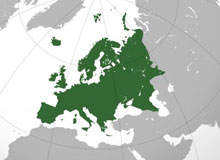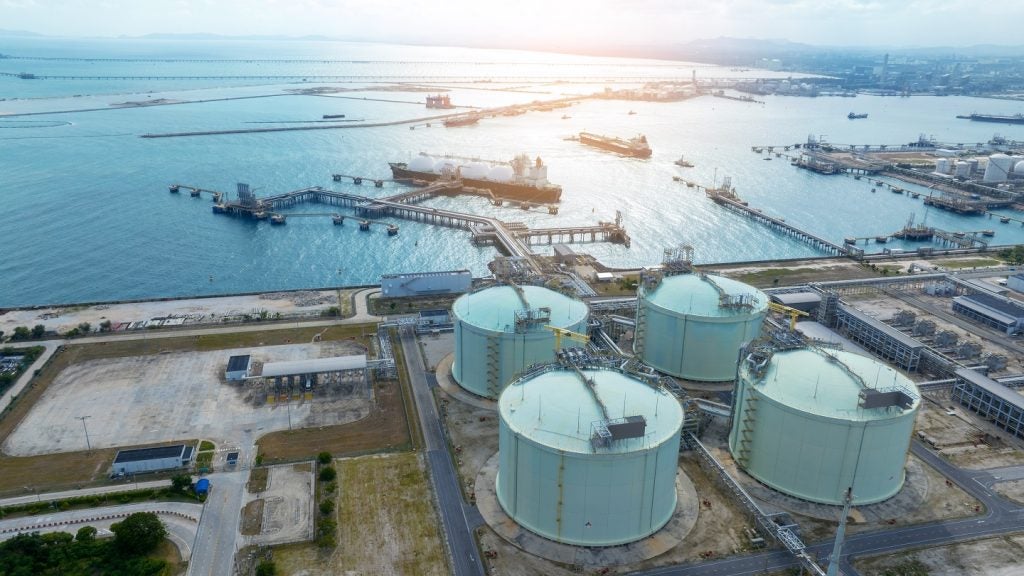
Europe, as one of the bigger net energy importers in the world, is trying to find different sources of energy to meet its demand.
Spurred on by concerns surrounding the depletion of North Sea assets and the monopoly held by Gazprom several European countries led by Ukraine, Hungary, Slovenia and Poland have begun focusing on developing and producing tight gas.
Tight gas is, as the name suggests, locked away in extraordinarily impermeable hard rock where underground formations are extremely ‘tight’. While a conventional gas formation can be relatively easily drilled and extracted these tight formations make it far more difficult to extract tight gas.
While tight gas is likely found in equal amounts both onshore and offshore, onshore exploration predominates, thanks to better seismic knowledge of the formations in which it is located.
The crux of the problem is, however, that without secondary production methods, gas from a tight formation would flow at very slow rates, generally making production uneconomical.
See Also:
Despite this, investment has begun to pick up and according to the latest GlobalData report, ‘European Tight Gas: Will Tight Gas Production in Europe Meet its Natural Gas Demand’, production is expected to start in earnest across Europe from the second half of 2011
How well do you really know your competitors?
Access the most comprehensive Company Profiles on the market, powered by GlobalData. Save hours of research. Gain competitive edge.

Thank you!
Your download email will arrive shortly
Not ready to buy yet? Download a free sample
We are confident about the unique quality of our Company Profiles. However, we want you to make the most beneficial decision for your business, so we offer a free sample that you can download by submitting the below form
By GlobalDataEurope’s natural gas market
The European natural gas market has always been dominated by Gazprom, the pricing policy of which has ensured it has had a good command on natural gas prices through linking them to oil prices. Growing production from unconventional resources in North America has however opened a new path, which European countries are now starting to follow.
Despite the fact that tight gas resources are known to be vast, their distribution globally is yet to be fully mapped. According to the National Petroleum Council (NPC), tight gas resources in the world may exceed 7,400tcf.
Major production has so far concentrated in the US, where, in 2009, around 244.7tcf of proven natural gas reserves were proclaimed making the country the fifth-largest proven reserves holder in the world.
Recent exploration in Europe has also been successful revealing rich deposits of unconventional gas resources, estimated at around 1,254tcf. Recent reports suggest the continent has around 549tcf of shale gas, 275tcf of CBM and 431tcf of tight gas. Extraction of these resources has mainly begun in Hungary, Ukraine and Poland
Hungary-Slovenia
In the Hungary-Slovenia region, Ascent Resources is the biggest operator in the Petišovci /Lovászi project area, which covers around 200km² near the Hungarian-Slovenian border.
The P50 is estimated to have gas-in-place of 412bcf (68.7 million barrels of oil equivalent (MMboe). The company made 3D seismic surveys of the entire area and the results have shown two sets of reservoirs – the Pontian and the Miocene.
Pontian is the shallower of the two reservoirs and Miocene the deeper. The company is focusing on the development of the Miocene reservoir since the shallow reservoirs were extensively developed during the 1960s and are considered to be fully depleted.
The first well to be drilled by Ascent in this area, the Pg-11 well in the Petisovci field began drilling on 21 December 2010. The primary objective of this well is to collect state-of-the-art data in order to assist in optimising the redevelopment of the gas field using technological advances from the last 30 years.
Consequently, the evaluation programme will include core sampling, extensive wireline logging and testing, and the data set will allow 3D seismic calibration and enhancement of the geological model of the whole project area.
Ukraine
In Ukraine JKX Oil & Gas is operating in the Rudenkovskoye field in Poltava, which is considered to have rich tight gas resources. In December 2010, JKX successfully completed and tested a horizontal well R-103 in this field, the first horizontal well successfully developed in this region.
The R-103 well, in a multirate test that took over eight hours, flowed at a stabilised rate of 8.1MMcf per day of gas and 18bpd of condensate through an 85in / 64in choke, with a flowing wellhead pressure of 930psi.
The R-103 is the longest horizontal well in the Ukraine, with a depth of around 4,641m and an openhole section in the reservoir of 1,026m in to the Devonian sandstone.
The well was drilled by a Skytop N-75 drilling rig. The next drilling in this region is expected to begin in early 2011 by drilling well R-105, followed by R-104 horizontal wells.
JKX is not the only company operating in Ukraine’s tight gas reservoirs, Shell has also applied for permission from the Ukrainian Government to explore the Donetsk-Dnepr basin, which is expected to have a high potential of tight gas deposits.
Poland
Aurelian Oil & Gas, through its subsidiary Energia Zachód (EZ), in which it holds a 90% stake, is drilling wells in the Siekierki gas field in Poland. Aurelian is planning to develop this field by using horizontal drilling techniques and multistage fracturing.
Two wells are currently being developed in the Siekierki field. Trzek-1, the first well in this field, was successfully tested at a rate of around 7.5MMcf per day in 2007. Gas sales from this region are expected to begin in the second half of 2011. The reservoir in this field is expected to have around 346bcf of net tight gas and Trzek-2 is expected to have around 16-28bcf of recoverable gas reserves.
The gas column of Trzek-1 is 91m and of Trzek-2 is 100.4m. The net reservoir within the gas column is 88% in Trzek-1 and 94% in Trzek-2. The maximum porosity in Trzek-1 is 16.2% and in Trzek-2 is 18.4%. The average porosity is 9.5% and 11.5% in Trzek-1 and Trzek-2, respectively. The gas saturation top reservoir is 66.5% and 69.9% in Trzek-1 and Trzek-2, respectively.
The key service contracts have been awarded to Baker Hughes and to Halliburton. Baker Hughes has won the contracts for directional drilling, logging-while-drilling and wireline logging. Halliburton has won the contracts for completion hardware and fracture services.
In addition to these regions, tight gas developments have also been seen in Ireland, the Netherlands and Sweden. With continued success in the exploration, development and production of unconventional resources, Europe will not only be able to meet its own growing energy demand, but it can also emerge as a significant producer in the future.
More Details on the Full GlobalData report.
GlobalData is an industry analysis specialist company providing business information products and services. Its highly qualified team of analysts, researchers, and solution consultants use proprietary data sources, and various tools and techniques to gather, analyse and represent the latest and the most reliable information essential for businesses to sustain a competitive edge.





